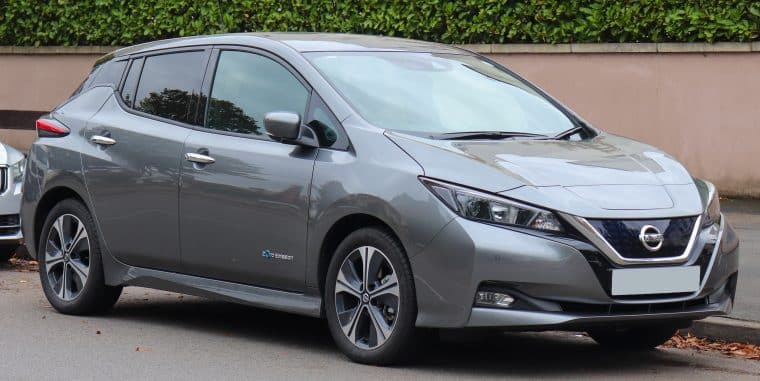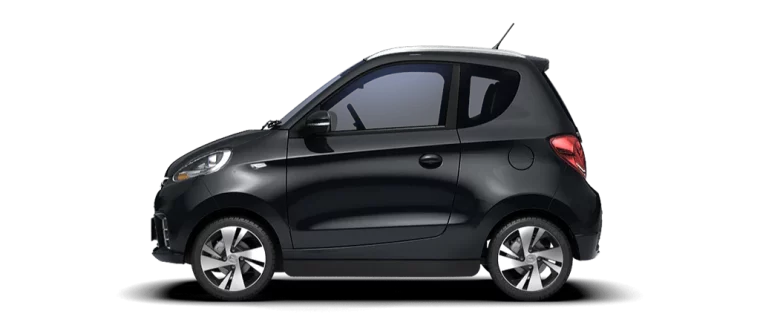R&D departments in top automakers are fighting to lower EV costs as much as possible, with the ultimate dream of creating a great EV that they can sell for just $25,000 or less. As consumers keep waiting for these cheaper alternatives, a new segment of ultra-compact and low-cost EVs dubbed “microcars” are making emission-free transportation more accessible.
Tesla’s CEO Elon Musk recently killed the dream of the company’s long-promised $25,000 mass-market EV, stating that he may no longer allocate resources toward building an affordable model due to the difficulties involved in further reducing manufacturing costs.
However, while Tesla pivots toward higher-end offerings like the Cybertruck and the next-gen Roadster, several other automakers are moving forward to offer tiny electric vehicles that aim to become the most budget-friendly models on sale today.
Leading the charge is an influx of Chinese microcars from EV startups and established brands alike. One example is Zhidou’s minuscule $4,400 “Rainbow” EV – a three-door hatchback that has gained viral attention for its remarkable sticker price, which makes the car cheaper than various electric bicycles.
Microcars Make Space by Reducing Passenger Seats and Battery Pack Sizes
While such rock-bottom pricing seems unfathomable for a street-legal passenger car in Western markets, microcars make economic sense in countries like China and Japan where higher density urban areas demand ultra-compact dimensions and limited range over highway driving capabilities.
With just 3.2 meters (126.9 inches) long and powered by battery packs under 18 kWh (compared to a Tesla Model 3’s 60 kWh), microcars like the Rainbow, Wuling Mini EV, and Geely Panda sacrifice interior space, range, and safety measures to drastically reduce costs through minimalist design and novel manufacturing approaches.
Features like over-the-air updates, digital displays, and connected smartphone apps show that China is innovating in the EV space by making these cars extraordinarily affordable at the expense of seats and leg space.
Removing Cost Barriers to Mass EV Adoption
For many consumers, price remains the single biggest obstacle to going electric. The average new EV in the US costs around $54,000 according to data from the Kelley Blue Book. This makes EV cars unaffordable for millions of people, especially in the current circumstances where interest has increased. Even Tesla’s current cheapest model, the rear-wheel drive Model 3, starts at $43,990 (not including a tax credit).
Automakers in the West have sought to kickstart EV adoption with more moderately-priced models like the Chevrolet Bolt, which was discontinued but may be brought back in the future.
Meanwhile, the forthcoming Volkswagen ID.2 is expected to have a price starting at around 25,000 euros. However, critics argue that even those prices remain too high for mass adoption beyond affluent buyers.
The extraordinary cost savings of microcars – assuming that they can meet the minimum safety standards of US transportation authorities – could finally bring EVs within reach of lower-income households that have been left behind in the world’s shift away from internal combustion cars and trucks.
Could Microcars Work in the US and Europe?
Whether Western consumers would embrace microcars to the same degree as their counterparts across Asia remains to be seen. The overall vehicle size, performance expectations, and use cases differ drastically.
The concept of an electric vehicle priced below $10,000 would seem extremely compelling at first glance for budget-conscious buyers. However, the limited range and capabilities prevent them from being feasible as a primary household vehicle for most Americans.
Safety is also a significant concern. Most current microcars lack the basic crash protection requirements mandated in the U.S. and Europe. This limits their use to low-speed urban drives or private roads. Making them “street-legal” for highways would require costly re-engineering and will ultimately raise their price tags as a result.
Adequate safety cell construction and crumple zones simply aren’t feasible for these ultra-compact versions. Manufacturers would need to make the vehicles larger and add reinforcements, which removes their original cost advantages. Making microcars safe for use in the US would be even more difficult than it would in Europe as the average size of vehicles there is absolutely massive and only growing.
There have been past attempts at cracking the US microcar market. Mercedes was one of the first to innovate in this market with its Smart Fortwo car, followed by F1 designer Gordon Murray’s T27 city car. Both faced demand shortfalls that ultimately led to their discontinuation.
Why do Chinese EVs Undercut US Competitors on Price?

A major factor allowing Chinese automakers to produce significantly more affordable EVs compared to their Western counterparts comes down to government subsidies and economic policies.
The Chinese government provides subsidies to the EV sector that include tax breaks for both the companies that manufacture these vehicles and consumers.
“From 2024, Chinese buyers would not have to pay tax on a full electric vehicle that has a driving range of at least 200km (124 miles) per charge.” said the Canadian independent research firm Adamas Intelligence in a recent report.
In addition, they offer relief in the form of sales tax exemption for amounts of up to 30,000 yuan ($4,144).
On top of consumer incentives, Chinese EV makers also directly benefit from lucrative government subsidies. BYD, which is one of the world’s largest EV makers, received a $3.7 billion subsidy from the Chinese federal government that would help keep producing affordable vehicles at a point when demand is facing headwinds.
The country’s control over the supply chain of key materials used to manufacture EVs like cobalt and lithium are also cited as factors that contribute to helping Chinese automobile companies more competitive in this space.
While the exact pricing of EVs may vary depending on the features and enhancements added by consumers, the affordability gap is significant when one compares some of the cheapest Chinese EV models to budget US offerings:
- Wuling Mini EV (microcar): Between $4,000 and $6,000 in China.
- BYD Dolphin Mini EV: Between $10,000 and $12,000 in China.
- BYD Yuan Plus: Starts at $16,550 in China and other markets.
- Cheapest US EV: Nissan Leaf at $29,000.
Even models like the $4,400 Zhidou Rainbow microcar highlighted in the article vastly undercut anything that is currently available in US territory, thanks largely to China’s policies involving direct subsidies and tax relief to consumers.
Although consumers in Western countries may also be entitled to receive some tax breaks and incentives from their governments, China still emerges as the leading force in pushing forward EV adoption by enticing consumers via direct government-sponsored cost savings.

